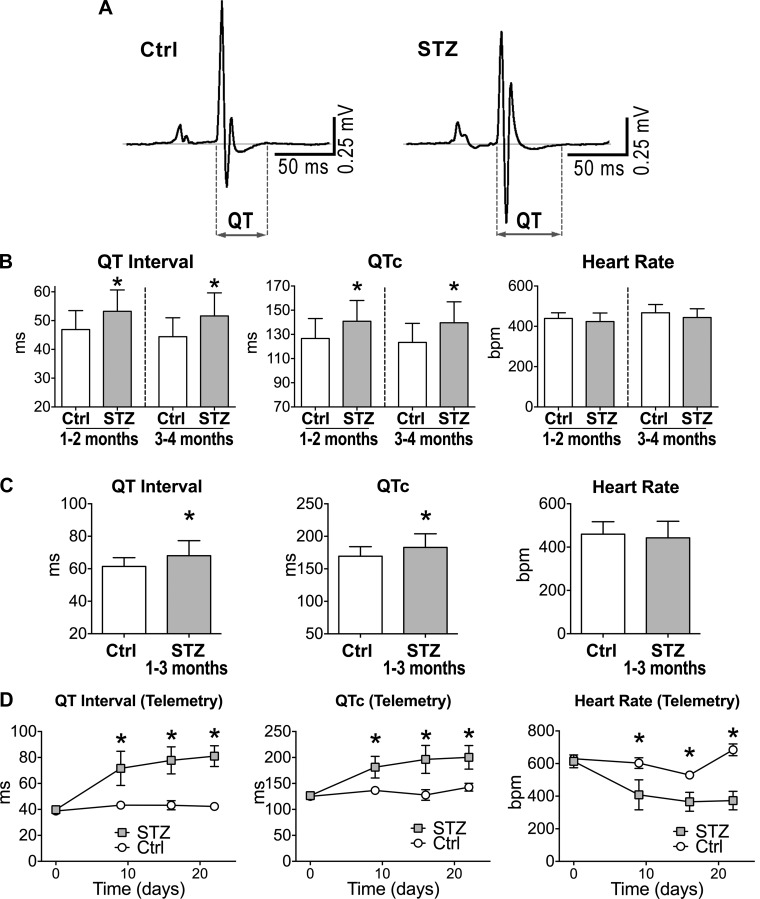Fig. 3.
Hyperglycemia prolongs cardiac electrical recovery. A: electrocardiograms (ECGs) obtained in one naïve male FVB mouse (Ctrl; left) and one STZ-treated male FVB mouse 49 days after induction of diabetes (right). B: electrocardiographic parameters under anesthesia for naïve male FVB mice (Ctrl, n = 26–28) and STZ-treated male FVB mice at 1 to 2 and 3 to 4 mo after induction of diabetes (STZ, n = 20–26) are shown as means ± SE *P < 0.01 vs. Ctrl for the same time point. C: quantitative data for anesthetized naïve female C57Bl/6 mice (Ctrl, n = 20) and STZ-treated female C57Bl/6 mice at 38–99 days after diabetes (STZ, n = 26) are shown as means ± SE *P < 0.05 vs. Ctrl. D: quantitative data for serially acquired ECGs in nonrestrained naïve (Ctrl, n = 2) and STZ-treated (STZ, n = 6) female C57Bl/6 mice by telemetry are shown as mean ± SE *P < 0.05 vs. Ctrl for the same time point.

